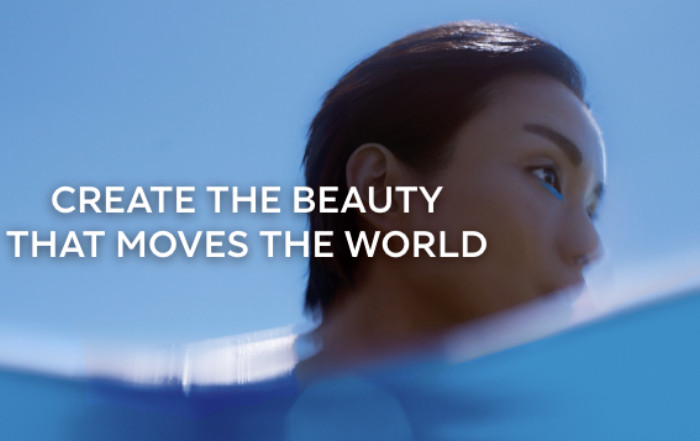The global skincare industry is witnessing a quiet yet powerful transformation led by the Scandinavian approach to natural beauty. Rooted in purity, sustainability, and minimalism, this philosophy is not merely a trend but a cultural export that has reshaped the way consumers view skincare products. Across continents—from the United States to Japan and from Germany to Australia—brands are turning their attention northward, adopting ingredients derived from the pristine ecosystems of Sweden, Norway, Finland, Denmark, and Iceland.
The allure of Scandinavian skincare lies in its balance between modern science and timeless nature. Unlike many global beauty movements that focus on excess or complexity, Nordic beauty emphasizes simplicity, functionality, and respect for the environment. Consumers increasingly seek products that not only enhance their appearance but also support ethical sourcing, climate consciousness, and long-term skin health. This new paradigm has been accelerated by global interest in sustainability, wellness, and the science-backed efficacy of ingredients sourced from extreme northern environments.
For readers of BeautyTipa.com, understanding how Scandinavian ingredients have achieved global prominence offers both insight and inspiration. The intersection of science, nature, and design in Nordic skincare mirrors the evolving expectations of consumers worldwide—those who value authenticity and integrity as much as innovation and results.
The Origins of Nordic Beauty Philosophy
The Cultural Roots of Simplicity
Scandinavian beauty is not a marketing invention; it is an extension of the Nordic lifestyle—one that prioritizes balance, health, and harmony with nature. In regions where daylight hours fluctuate dramatically and winters are harsh, people have historically relied on nature’s resilience to maintain wellbeing. This philosophy is encapsulated in the Nordic concepts of lagom (Swedish for “just the right amount”) and hygge (Danish for “comfort and coziness”).
These cultural principles inform skincare routines that are efficient, sustainable, and deeply nourishing. Instead of layering multiple serums and creams, Scandinavian consumers focus on fewer, high-quality formulations made with ingredients that deliver multiple benefits. This minimalist mindset has gained traction globally, particularly among younger consumers who are increasingly rejecting overconsumption and synthetic additives in favor of clean beauty alternatives.
Nature as a Laboratory
Scandinavia’s vast landscapes—its fjords, forests, glaciers, and tundras—serve as natural laboratories for skincare innovation. Many plants and algae species thriving in these regions have developed remarkable resilience to cold, darkness, and oxidative stress. Researchers have discovered that such environmental stressors often lead to higher concentrations of antioxidants and vitamins in these plants.
As a result, ingredients like cloudberry, sea buckthorn, birch sap, and Arctic algae have become central to formulations known for their rejuvenating and protective qualities. The emphasis is not only on sourcing these materials responsibly but also on scientifically validating their efficacy, a hallmark of the Nordic approach to beauty that blends tradition with modern biotechnology.
🌿 Nordic Skincare Ingredients Explorer
Discover the power of Scandinavian botanicals transforming global beauty
🫐Cloudberry: The Golden Arctic Treasure
📍 Where It Thrives
Native to Arctic regions of Scandinavia, cloudberries grow in pristine marshlands and bogs. Their extreme growing conditions result in concentrated bioactive compounds.
🍊Sea Buckthorn: The Vitamin-Packed Healer
🌱 Sustainable Sourcing
Sea buckthorn thrives in poor soils with minimal intervention, making it an eco-friendly choice. Finnish research confirms its benefits for skin hydration and elasticity.
🌳Birch Sap: The Nordic Detox Elixir
🌸 Spring Harvest Ritual
Collected during early spring snowmelt, birch sap has been consumed in Nordic countries for centuries. Modern skincare harnesses its purifying and hydrating benefits.
🧊Arctic Algae: Climate-Resilient Biotechnology
🔬 Biotechnology Innovation
Research from Aarhus University and University of Iceland validates Arctic algae's ability to enhance skin resilience. Perfect for urban environments with high pollution.
Key Scandinavian Ingredients Redefining Modern Skincare
Cloudberry: The Golden Arctic Treasure
Among Scandinavia’s most prized natural resources, cloudberries (Rubus chamaemorus) stand out as the golden fruit of the Arctic. These rare berries are packed with vitamin C—nearly four times that of an orange—as well as omega fatty acids and antioxidants that help neutralize free radicals and strengthen the skin’s barrier.
Brands such as Lumene and The Nordic Beauty Edit have integrated cloudberry extract into serums and moisturizers for its brightening and rejuvenating properties. The ingredient’s growing popularity in international markets such as the United States, Germany, and Japan underscores a broader trend: consumers’ shift toward potent, natural sources of nourishment that can rival or exceed synthetic formulations.
For readers exploring new skincare routines rooted in natural efficacy, cloudberry-infused products represent a bridge between tradition and cutting-edge science.
Sea Buckthorn: The Vitamin-Packed Healer
Sea buckthorn, a vibrant orange berry native to coastal and mountainous regions across Norway and Finland, is another cornerstone of Nordic skincare. Rich in omega-7, beta-carotene, and essential fatty acids, it supports skin regeneration and combats inflammation. Studies conducted by the Finnish Institute for Health and Welfare have highlighted sea buckthorn’s ability to improve skin elasticity and hydration, particularly in dry or mature skin.
International brands have embraced the ingredient not only for its effectiveness but also for its sustainability. Sea buckthorn shrubs thrive in poor soils and require minimal human intervention, aligning with eco-conscious farming principles. Consumers searching for restorative or anti-aging solutions can discover a wealth of information on skincare innovation that incorporates such naturally adaptive ingredients.
Birch Sap: The Nordic Detox Elixir
When the snow begins to melt in early spring, birch trees release a nutrient-rich sap that has long been consumed in Nordic countries for its cleansing properties. In skincare, birch sap serves as a hydrating and revitalizing ingredient, replenishing minerals and amino acids that restore the skin’s natural glow.
Brands like Mádara Organic Skincare from Latvia and Rituals in the Netherlands have used birch sap as a base for toners and facial essences, leveraging its ability to enhance moisture retention without heaviness. The ingredient’s growing international acclaim has inspired more consumers to adopt holistic beauty practices rooted in wellness principles rather than superficial quick fixes.
Arctic Algae and Moss: Climate-Resilient Biotechnology
The harsh Arctic environment has given rise to microalgae and moss species capable of surviving subzero temperatures and intense UV exposure. These organisms contain bioactive compounds that help protect skin from pollution, dehydration, and oxidative stress—factors increasingly prevalent in urban environments worldwide.
Research by Aarhus University and University of Iceland has shown that Arctic algae extracts can strengthen cellular defense mechanisms and reduce signs of premature aging. These discoveries have encouraged biotechnology firms across Sweden, Iceland, and Denmark to collaborate with international laboratories in countries like France and South Korea, leading to a new wave of bioactive skincare innovation.
For readers exploring the latest beauty trends, Arctic bioactives exemplify how sustainable science can drive measurable results while reducing ecological footprints.
Sustainability and Ethical Sourcing in Scandinavian Beauty
A defining characteristic of the Scandinavian skincare movement is its commitment to sustainability and transparency. Unlike the fast-beauty cycles that dominate many global markets, Nordic brands tend to build long-term relationships with local suppliers, environmental organizations, and scientific communities to ensure traceability and accountability across every stage of production. This ethical foundation appeals to modern consumers who want to align their purchasing decisions with their values.
In Finland and Sweden, for example, ingredient suppliers are bound by strict environmental regulations that govern harvesting and extraction processes. Natura Siberica, Lumene, and Urtekram have become pioneers in setting global standards for eco-certification, ensuring that their use of Arctic botanicals does not disrupt fragile ecosystems. The ethos of “leaving nature better than you found it” resonates across generations, reinforcing trust in Nordic products in contrast to mass-market formulas that often rely on synthetic fillers or unsustainable palm oil derivatives.
The adoption of eco-friendly packaging solutions—such as biodegradable tubes, recyclable glass jars, and post-consumer plastics—further strengthens this reputation. Global consumers increasingly expect brands to reduce waste, and the Nordic Council of Ministers continues to promote circular economy initiatives that have influenced beauty conglomerates worldwide. Readers who want to explore such trends can find relevant discussions in BeautyTipa’s sustainability guides and business and finance sections, where responsible brand models are examined in detail.
Scandinavian brands are also early adopters of carbon-neutral manufacturing. By leveraging renewable energy—mainly hydropower and wind—they are able to reduce their environmental footprint while maintaining high production standards. This ecological mindfulness not only strengthens brand identity but also sets a precedent for the international beauty industry, pushing multinational corporations to revisit their sourcing strategies and material ethics.
Global Market Influence of Scandinavian Skincare
The reach of Scandinavian skincare has expanded far beyond the Nordic region. According to 2025 market analytics reports from Euromonitor International, products originating from or inspired by Scandinavian formulations have grown by more than 40% in the premium skincare sector over the last three years. The influence extends across North America, Western Europe, and Asia, where consumers equate Nordic products with purity, functionality, and scientific credibility.
In the United States, major beauty retailers such as Sephora, Nordstrom, and Credo Beauty have expanded their Scandinavian offerings, responding to rising demand for eco-luxury and minimalist skincare. Meanwhile, in Germany, France, and the Netherlands, the trend aligns with broader European Union goals for sustainable product labeling and ethical consumption. In South Korea and Japan, markets historically dominated by K-beauty, Nordic brands are carving niches by appealing to professionals seeking clinically proven ingredients with environmental integrity.
Nordic ingredients are also influencing formulation trends beyond skincare, extending into cosmeceuticals, nutrition-infused beauty, and biotechnological wellness. As scientific institutions in Denmark and Finland collaborate with international pharmaceutical firms, the line between skincare and healthcare continues to blur—ushering in an era where “beauty as wellness” becomes a defining standard. Readers can explore evolving cross-sector partnerships in BeautyTipa’s technology and beauty section.
Scandinavian Brands Leading Global Innovation
Among the standout brands driving this transformation, Lumene from Finland deserves special recognition. Founded in the 1970s, the company has evolved from a regional cosmetics firm into a global leader in sustainable beauty innovation. Its formulations—rooted in Arctic spring water and berries—are celebrated for combining natural potency with laboratory precision. Lumene’s success illustrates how a small nation’s commitment to science and sustainability can influence global supply chains and redefine industry standards.
Verso Skincare from Sweden has taken a science-forward approach, popularizing retinol 8, a stabilized derivative of vitamin A that delivers anti-aging benefits with minimal irritation. The brand’s sleek aesthetic and minimalist design echo Scandinavian architecture and appeal to consumers seeking sophistication without excess.
RAAW Alchemy, based in Denmark, and Bioeffect from Iceland showcase the region’s growing expertise in bioactive skincare. Bioeffect’s use of barley-grown epidermal growth factors (EGFs) in skincare serums has garnered international acclaim, blending agricultural biotechnology with dermatological efficacy. These companies are not just competing with established global players; they are redefining luxury through integrity and transparency.
Meanwhile, boutique brands like Skyn Iceland, L:a Bruket, and Bjork and Berries embody the artisanal spirit of Nordic craftsmanship. Each emphasizes plant-based formulations, natural fragrances, and packaging aesthetics that celebrate the serenity of northern landscapes. Their presence in global markets reflects consumers’ appetite for authenticity and emotional connection—a quality increasingly rare in mass-produced cosmetics.
For those exploring emerging innovators and entrepreneurial stories within the beauty ecosystem, BeautyTipa’s international section offers valuable insight into how small regional startups are competing with multinational giants through creativity and ecological responsibility.
Consumer Psychology: Trust and Transparency in Nordic Formulations
Modern consumers, particularly in 2025, exhibit a psychological preference for transparency and ethical alignment. The Scandinavian beauty industry has capitalized on this by maintaining open ingredient lists, traceable supply chains, and honest marketing. Shoppers weary of exaggerated claims find reassurance in brands that emphasize proven efficacy and straightforward messaging.
Trust is cultivated not only through labeling but also through third-party verification. Certifications such as Ecocert, COSMOS Organic, and Nordic Swan Ecolabel provide tangible evidence that a product meets rigorous environmental and safety standards. Nordic companies rarely rely on influencer-driven hype; instead, they build credibility through long-term user satisfaction and dermatological studies.
Another psychological factor contributing to global demand is the association of Nordic living with wellbeing. The perception of clean air, pure water, and balanced lifestyles evokes feelings of health and serenity. Consumers seek to replicate that harmony in their daily routines by adopting products that symbolically and functionally connect them to nature.
This emotional connection extends into digital storytelling and brand design. Nordic brands use muted color palettes, minimalist typography, and serene imagery to communicate a sense of calm. In a world saturated by noise and digital overstimulation, this quiet visual language resonates deeply. For readers interested in refining their own aesthetic or wellness practices, curated perspectives can be found in BeautyTipa’s routines and wellness articles.
The Role of Biotechnology and Scientific Validation
Scientific innovation has always been central to Nordic beauty. Scandinavian research institutions and biotech firms are increasingly partnering with global laboratories to analyze the molecular properties of Arctic ingredients. Advanced cold-extraction technologies preserve bioactive compounds without damaging their structure, ensuring higher potency in final formulations.
The use of microencapsulation and fermentation biotechnology allows natural ingredients to maintain stability while enhancing absorption. This intersection of nature and science has led to the development of hybrid formulas that outperform traditional plant-based skincare. Bioeffect’s EGF serum, for instance, demonstrates how a naturally derived protein can accelerate skin regeneration without the ethical issues tied to synthetic alternatives.
Universities like Uppsala University in Sweden and University of Helsinki in Finland continue to lead dermatological research, focusing on the microbiome, photoprotection, and cellular repair mechanisms. Their findings feed directly into commercial innovation, bridging academia and industry in ways that inspire other regions to follow suit. To explore further intersections between biotechnology and cosmetics, readers can browse BeautyTipa’s beauty and technology section.
The Future of Global Skincare Through the Scandinavian Lens
Looking toward 2030, the influence of Scandinavian skincare is expected to expand even further. Analysts predict that Nordic beauty exports will exceed $3 billion annually as global consumers demand transparency, efficacy, and environmental stewardship. However, the future will not simply be about exporting ingredients—it will be about exporting a mindset.
This mindset prioritizes holistic beauty, where wellness, mental balance, and ecological harmony are inseparable. The boundaries between skincare, nutrition, and emotional wellbeing will continue to dissolve, creating integrated beauty systems powered by both technology and tradition. The rise of AI-driven personalized skincare diagnostics—already being tested by Nordic startups—will further enhance the user experience, ensuring that formulations adapt to climate, diet, and individual biochemistry.
The Scandinavian philosophy of “less is more” will remain a guiding principle, but it will evolve into a sophisticated synthesis of minimalism and precision science. Just as Japanese minimalism influenced architecture and design in the 20th century, Nordic minimalism is shaping the aesthetic and ethical standards of the global beauty industry in the 21st.
For readers inspired to align their personal care with environmental awareness, BeautyTipa.com offers a wealth of expert insights across skincare, brands and products, health and fitness, guides and tips, and fashion.
As global awareness continues to grow, Scandinavian ingredients will remain more than just exotic components—they will serve as symbols of resilience, purity, and responsibility. In a world where consumers increasingly seek truth and transparency, Nordic skincare stands as a testament to the power of nature, the discipline of science, and the enduring beauty of simplicity.








